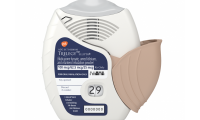-
Brain ‘Stethoscope’ Listens For Silent Seizures
- Source: Neuroscience News
- 1,295
- March 23, 2018
-
EMA starts review of Xtandi in non-metastatic prostate cancer
- Source: pmlive
- 806
- March 23, 2018
-
Tooth Sensor Measures Intake of Sugar, Salt, Alcohol
- Source: Med Gadget
- 1,315
- March 23, 2018
-
Prothena Announces Global Neuroscience Research & Development Collaboration with Celgene for Novel Therapies for Patients with Neurodegenerative Diseases
- Source: finance.yahoo
- 472
- March 22, 2018
-
Artificial intelligence firm twoXAR raises $10M for partnering drive
- Source: Fiercebiotech
- 570
- March 22, 2018
-
FDA expands approval of Adcetris for first-line treatment of Stage III or IV classical Hodgkin lymphoma in combination with chemotherapy
- Source: finance.yahoo
- 582
- March 22, 2018
-
Oxford Performance Materials targets Asia after 3D printed medical devices approved in Japan
- Source: 3Ders
- 533
- March 22, 2018
-
New wearable brain scanner allows patients to move freely for the first time
- Source: Medical Xpress
- 551
- March 22, 2018
-
4 Ways to Find Medical Device Buyers in 2018
- Source: Ddu
- 1,179
- March 21, 2018
your submission has already been received.
OK
Subscribe
Please enter a valid Email address!
Submit
The most relevant industry news & insight will be sent to you every two weeks.













